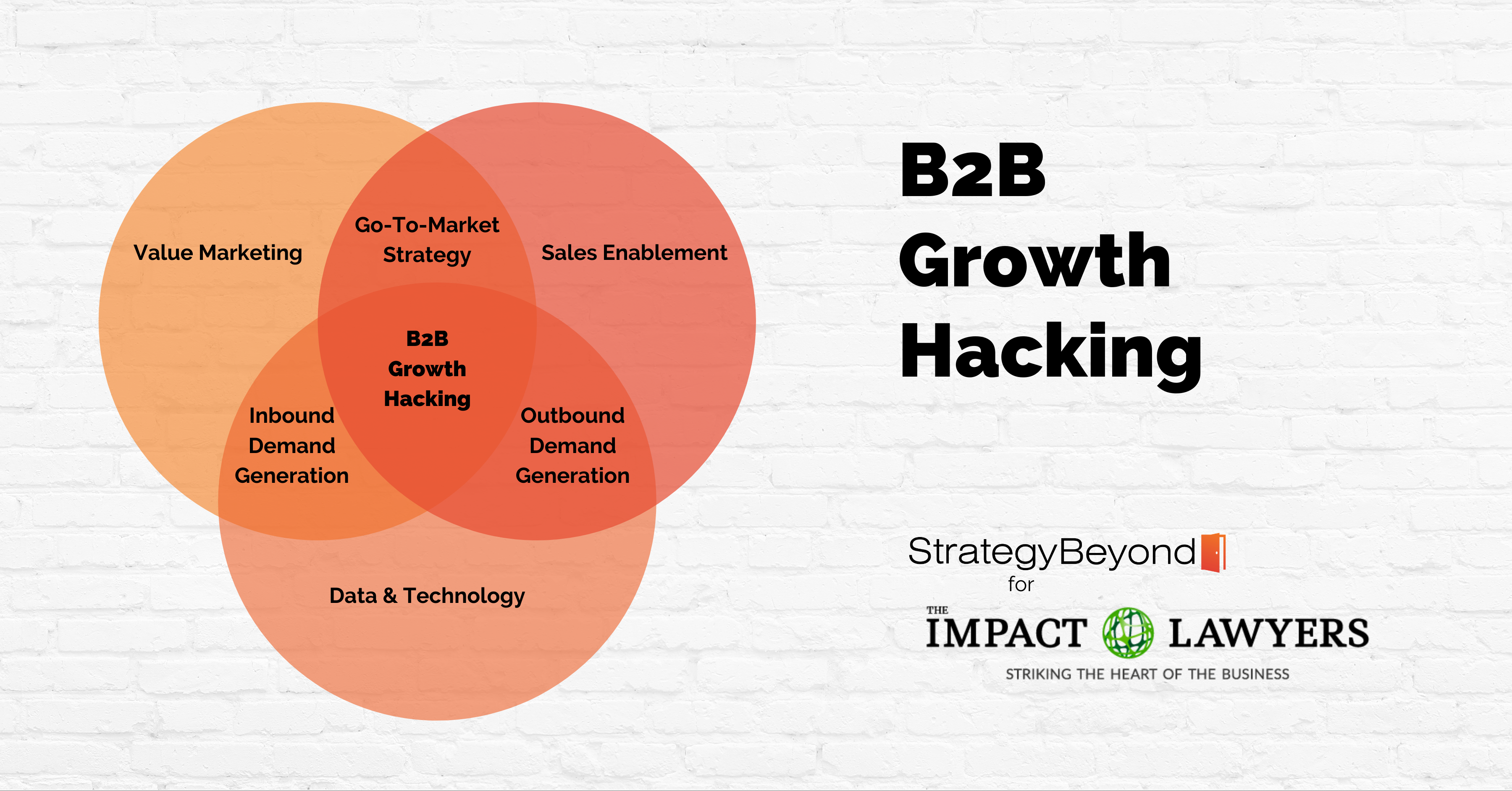Why Should You Care About Growth Hacking?
---
Growth Hacking should be taken into account because it is the crossover of Value Marketing, Sales Enablement, Data & Technology as seen in the Venn diagram
All Tech Businesses need to grow; it is their lifeblood. It keeps your investors happy, it drives your valuation, and maybe one day, you will achieve a successful exit. As we all know, 90% of startups do not make it past their initial runway, primarily due to a failed commercial strategy and execution. Growth Hacking allows you to pull together as a team using your collective skills, find what works and doesn’t quickly, and amplify the successful parts to scale and win more customers.
B2B Growth Hacking
Growth Hacking is a cross-functional discipline born from the need for tech businesses to achieve rapid growth when executing commercial strategies. It is the crossover of Value Marketing, Sales Enablement, Data, and Technology. The aim of Growth Hacking is to generate demand for products, replicating and scaling what works while modifying or abandoning what doesn't before investing additional resources. The discipline has gained validation as an approach to growth in the "new normal" but was initially used in startups who needed to achieve product fit in their chosen market. Today it is an accepted method in the tech space and a demonstrated way to accelerate growth on bootstrapped budgets within short periods. The different functional areas and intersections that make up the (B2B) Growth Hacking discipline are shown in the Venn diagram and explained below.

Value Marketing
Value Marketing is marketing based on providing value for a specific audience to drive engagement and ultimately profitable customer action. It may take the form of Thought Leadership, narratives that point to your solution as the best fit for your customer's problem, or Keynotes, events that position you as having a high impact within a recognized field while establishing your character as a domain expert.
Sales Enablement:
Sales Enablement is the process of informing and driving sales within your organization through content and social tools. It ensures your sales teams are more effective and successful at engaging the buyer throughout the buying journey and interacting directly with your prospects on social platforms, a.k.a. social selling.
Data & Technology:
Data and Technology include metrics used to determine what performs best in accelerating your growth and tools aimed at streamlining cross-functional marketing and sales high-touch workflows. They are used to plan, coordinate, manage, and measure execution alongside strategy, enhancing exposure, generating engagement, and nurturing your customer loyalty loop.
Go-To-Market Strategy (where Value Marketing meets Sales Enablement):
Go-To-Market entails segmenting your target ecosystem by industry verticals, personal data, behavior, and motivation; understanding the benefits you offer to your target audience and what monetary value that has to them; establishing an effective communication framework
telling your story in a way that resonates, and defining your commercial model by aligning price with the value you provide.
Inbound Demand Generation: (where Value Marketing meets Data & Technology):
Inbound Demand Generation entails creating a pulling mechanism for prospects to enter your loyalty loop by applying tools and analytics to generate, promote and test high-level content, eventually leading to brand ambassadorship.
Outbound Demand Generation (where Sales Enablement meets Data & Technology):
Outbound Demand Generation entails interacting with prospects to leverage meaningful conversations based on touchpoints, using technology to successfully manage your qualification process and customer relationships.
Today, Growth Hacking seems to be integrating with existing professions. However, as digital transformation becomes an inevitable step, it will probably assimilate future job functions. Once we abandon superseded concepts and perceptions of marketing, sales, and strategy within corporate settings, we can genuinely embrace change and appreciate the cross-functional advantages offered by each discipline in a collective effort to accelerate growth and achieve go-to-market fit.
Related links
Main menu






